Clothes moths cause real damage, and by the time we realize it, precious clothes have large, ragged holes beyond repair. Here are 18 DIY solutions to repel moths from your closets and keep them out for good.
Moths That Live in Your Closet
Most of us recognize night-flying moths because they’re attracted to artificial lights. Not so, the sneaky clothes moths!
Clothes moths prefer dark, damp spaces like closets, where their larvae eat natural fibers like leather, cashmere, cotton, velvet, silk, wool, fur, and linen before hatching into adults that lay even more eggs. Adults lay 40-50 minute pinhead-sized eggs in one sitting!
North America has 12,000 types of moth and only two different types of common clothes moths:
- Webbing clothes moth Tineola bisselliella
- Casemaking clothes moth Tinea pellionella
It’s important to recognize the difference because garden moths do not eat clothes. In fact, garden moths are important pollinators. These nights, butterflies visit flowers to drink nectar and distribute pollen the same way that bees and butterflies do.
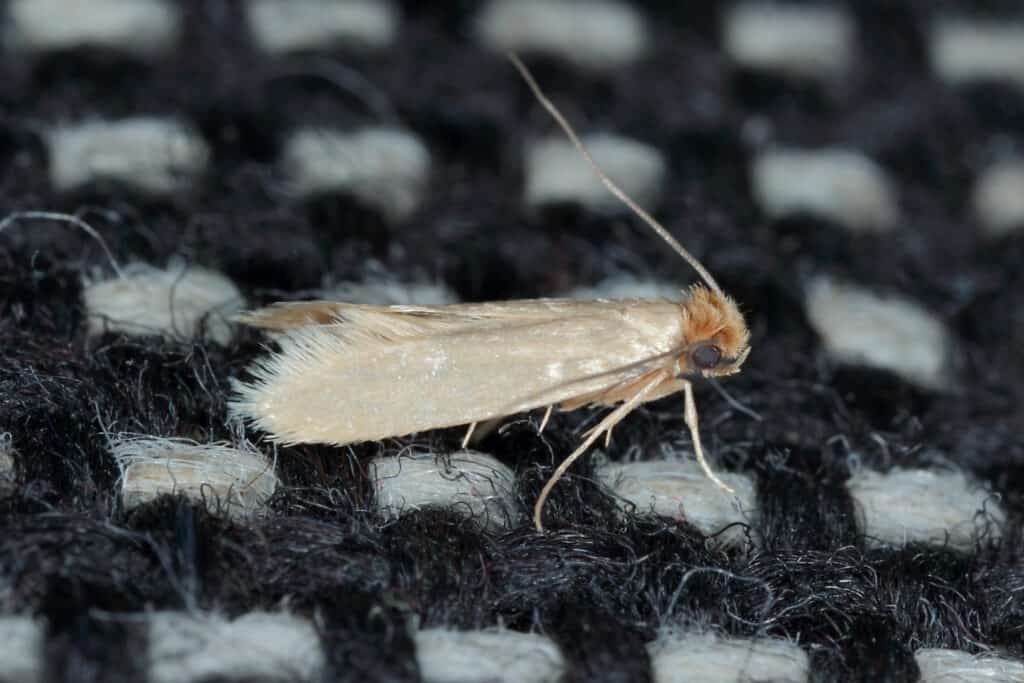
can lay 40-50 eggs at a time.
©Thomas Kleidysz/Shutterstock.com
Signs You Have a Moth Infestation
Moth larvae have left holes in clothes since at least Roman times! Look out for cocoons and webbing on your clothes and in a closet’s corners, along with a musty scent. Adult clothes moths look delicate, and they’re usually silken and buff-colored. Larvae appear buff or beige, and their webbing is off-white.
Clothing moths live for 90 days as adults, but they don’t feed. It’s actually their larvae that eat clothes. An adult is capable of laying numerous eggs, which can live for years feasting on cloth fibers before hatching.
Yuck!
Here’s how to repel moths from your closets without calling an exterminator.
1. Clear Up Contamination
You must thoroughly clean your closet if you spot moths, larvae, webbing, cocoons, or a distinctive musty smell. This means removing any spilled food or drinks, old papers, carpets, soft furnishings, and all of your clothes for deep cleaning.
A thorough cleanout helps rid clothes moths and their larvae from undisturbed closets.
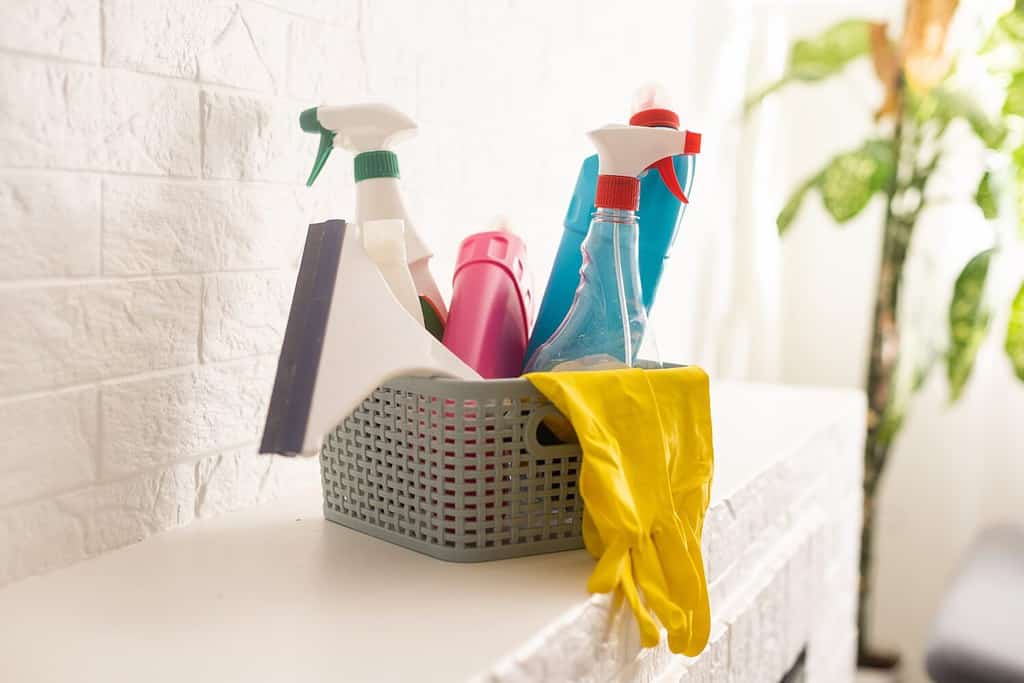
Clean closets regularly to remove clothes, moth eggs, larvae, and webbing.
©Andrew Angelov/Shutterstock.com
2. Deterrent Herbs
Clothes moths do not like strong scents. Use this to your advantage! Fill small, clean cloth bags with dried lavender, bay, cloves, thyme, or rosemary.
Hang bags from the railings, in closet corners, in pockets, and along the floor. It’s best to renew them every three months. Rub the bags to release their scent each time you open the closet.

Bagged dried herbs like lavender repel clothes moths.
©iStock.com/Daria Yakovleva
3. Essential Oils
Along the same lines, moths hate essential oil scent. Soak a cotton ball or piece of muslin in an essential oil such as lemon, citrus, patchouli, myrrh, or any of the herbs listed above and place it in the closet
Renew whenever it dries out.

Essential oil soaked on a cotton ball helps keep clothes moths at bay.
©iStock.com/Olivka888
4. Wash Clothes Before Storing Them
Moth larvae sniff out and eat natural fibers, so synthetic clothes are usually safe. However, larvae are also drawn to human or pet sweat, skin, body oil, and hair.
Wash everything before it’s placed back in the closet, especially if it’s rarely worn. Items such as winter coats and summer clothes need a thorough wash before they’re put away for the season.
Consider dry cleaning expensive items because the chemicals involved kill eggs and larvae. Dry cleaning is costly, but it’s less than replacing a closet full of clothes every few months.
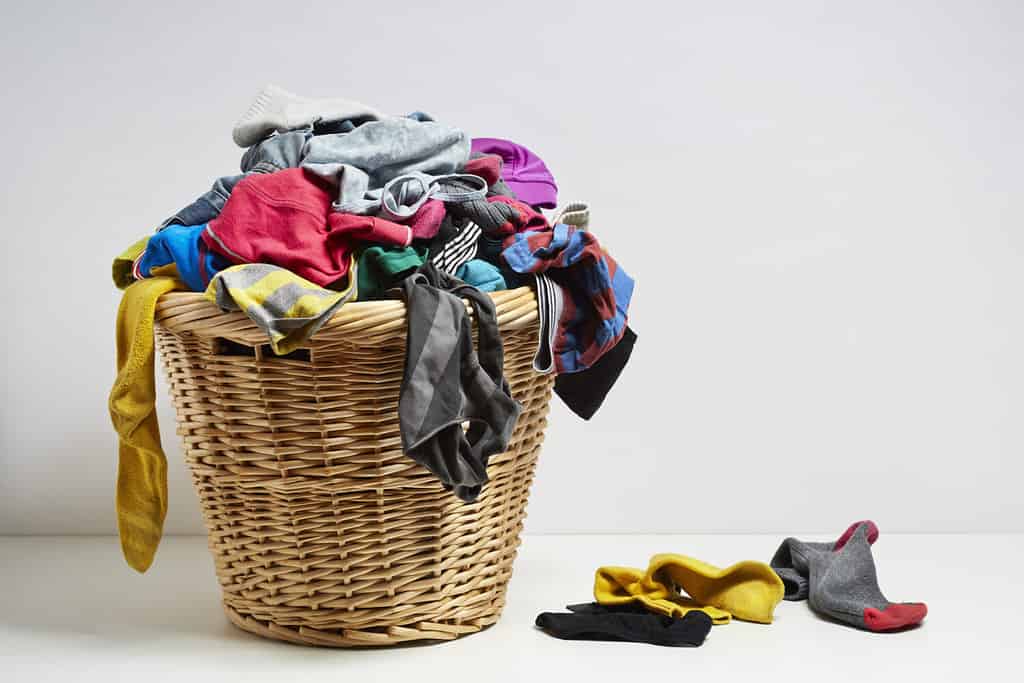
Wash clothes before storing them; moths are attracted to skin flakes, hair, and food spills.
©Paul Michael Hughes/Shutterstock.com
5. Airtight Storage
Moths can chew through paper or cardboard boxes but can’t get inside airtight storage.
Consider packing clothes and furnishings in sealed boxes or vacuum pack bags to ensure they can’t access fibers.
If you hang clothes such as winter coats in the closet, zip up pockets and hoods so moths can’t creep into the tiny crevices.

Moths chew through cardboard, so store clothes in an airtight container like a vacuum-sealed bag.
©John Hanson Pye/Shutterstock.com
6. Let in Fresh Air
Unlike garden moths that love fresh air, clothes moths prefer humid, damp spaces to breed in.
The best way to repel moths from your closet is simply to leave the closet door open for a few hours each day to improve airflow.
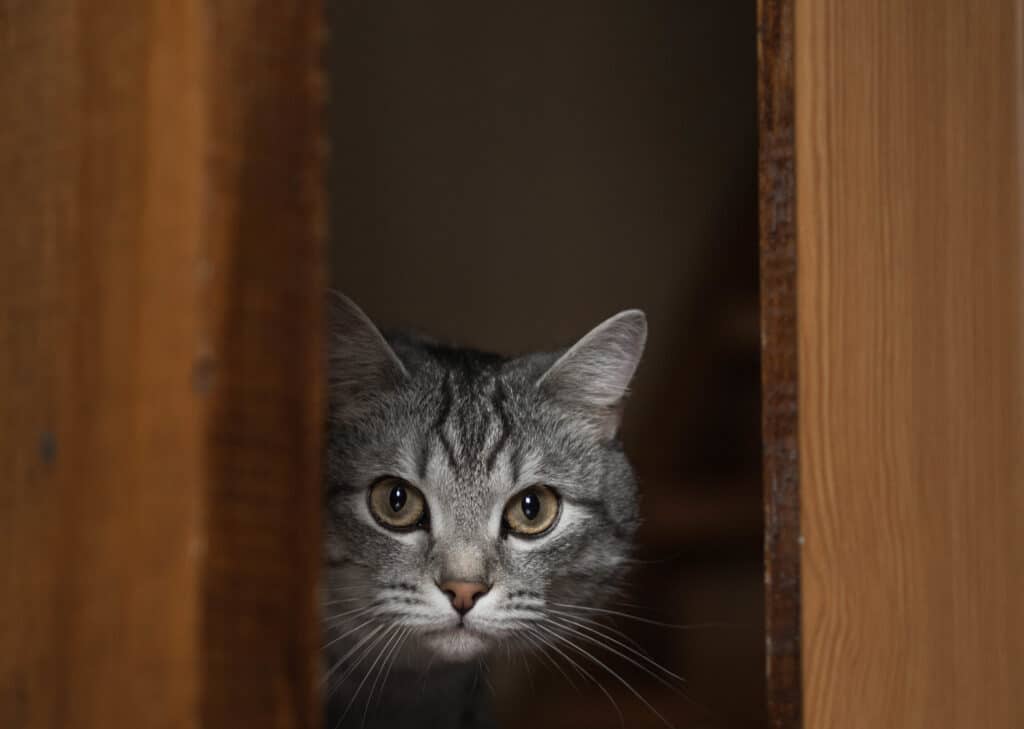
Leave closet doors open for a few hours each day to improve airflow.
©Sentelia/Shutterstock.com
7. Cedar Hangers
Cedar repels moths and most types of pest insects. It’s worth investing in cedar clothes hangars and cedar balls to put in pockets. Cedar wood contains a natural scent that moths don’t like but does fade over time. Replace cedar hangars every few years to retain freshness.

Hangars and balls made from cedar naturally repel clothes moths.
©iStock.com/Holcy
8. Hot Wash or Steam
A hot wash or steam destroys moth larvae. Check clothes and furnishing labels before dialing up the temperature first. Regular hot washing isn’t eco-friendly, but if clothes moths cause problems, then a hot wash can help break the cycle.

Hot washing or steaming clothes kills eggs and larvae.
©YakobchukOlena/iStock via Getty Images
9. Cold Wash
Alternatively, a very cold wash can destroy eggs and larvae, too. Cold washing is often more suitable for delicate items and handwash-only clothing. Set the machine to zero and let it run over a longer period.

Cold wash destroys clothes moths, plus their eggs and larvae.
©DeZet/Shutterstock.com
10. Wash Down With Vinegar
A moth infestation requires an attack on several fronts. As well as the above, washing out your closet with white vinegar gets rid of moths, larvae, and eggs that can’t survive the acid.
Use white vinegar and water 50/50 to mix and scrub the closet, making sure the cracks and corners get a good sloshing.

Use white vinegar and water to wash out an infested closet.
©focal point/Shutterstock.com
11. Vacuum Regularly
Regularly vacuuming is a tried and tested way to remove pests from the home. Closet spaces are often forgotten during the regular clean, but if your closet spaces are carpeted or full of clothing and soft furnishings, that’s perfect for moths.
Vacuuming removes moths, larvae, eggs, and debris that attracts in the first instances, such as dog or cat hair, skin flakes, and food stains.
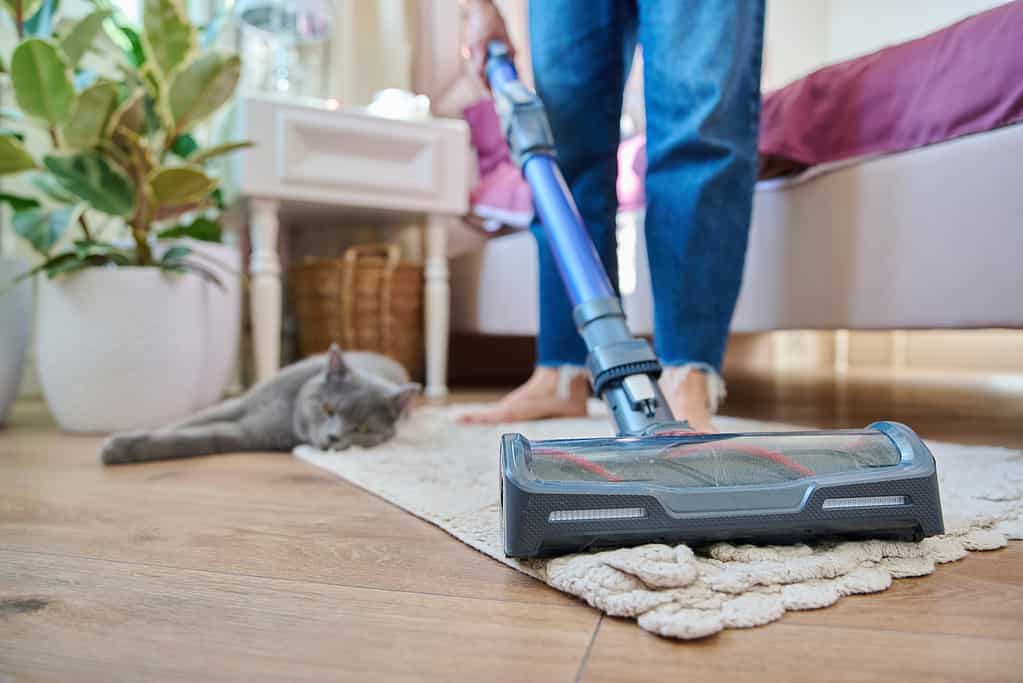
Vacuuming regularly removes clothes moths before they can infest furnishings.
©Valeriy_G/iStock via Getty Images
12. Brush Clothing Outside
Beating or brushing rugs, curtains, furnishings, coats, or other natural material types outside is a surefire way to ensure moths don’t simply move to another area of the home.
Beating dust, hair, skin, and other natural debris from stored items destroys moths because it bashes out the webbing in which larvae hide.
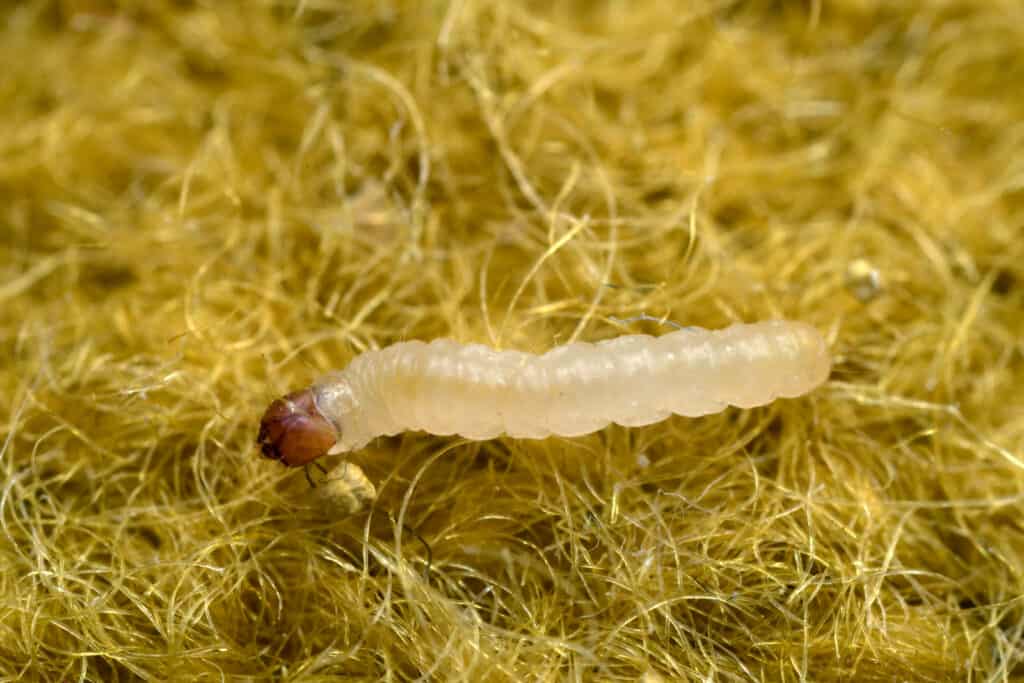
Beat or brush furnishings outdoors to ensure moths don’t spread around the home.
©D Kucharski/Shutterstock.com
13. Temperature Changes
Hot and cold washes help destroy the moth cycle, but if clothing that can’t touch water is affected, then freezing helps.
Place the item in a sealed bag with as little air as possible inside (such as a Ziploc bag), and place it in the freezer for 72 hours to ensure it kills everything. Then, let the material heat up naturally at room temperature and brush it over before returning it to the closet.

Pop clothes in a freezer bag like this chopped zucchini, and freeze for 72 hours to destroy moths.
©Qwart/ via Getty Images
14. Buy a Moth Spray
If natural methods just don’t cut it, then commercial closet moth sprays may help. Be sure to use it on closet walls, corners, doors, and stored clothes, and always follow the label’s instructions.
Antique materials may not respond well to pesticide sprays. Freezing is a better method for older fabrics.
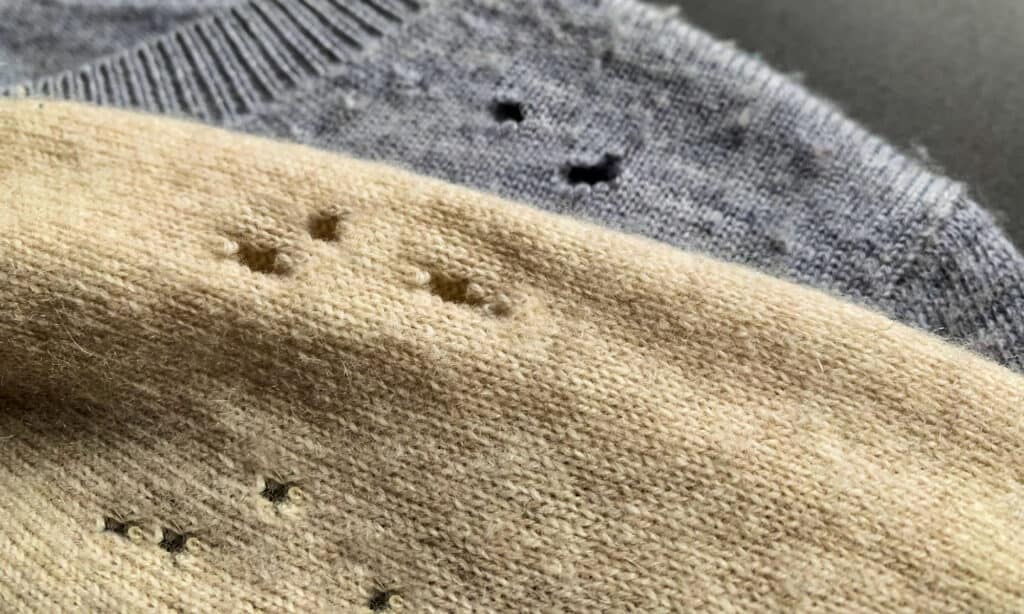
A commercially bought moth spray can prevent holes in treasured clothing.
©Little Adventures/Shutterstock.com
15. Pheromone Traps
Pheromone traps encourage moths to move closer, then trap them away from your clothing. Traps take some time to work, so use them with other control methods since moths can destroy materials in a short space of time.
Replace pheromone traps regularly, at least every three months, to ensure moths find them attractive.
Pheromone traps help spot infestations before they get out of hand. It’s worth popping one into a closet with long-term storage fabrics to get a head start.
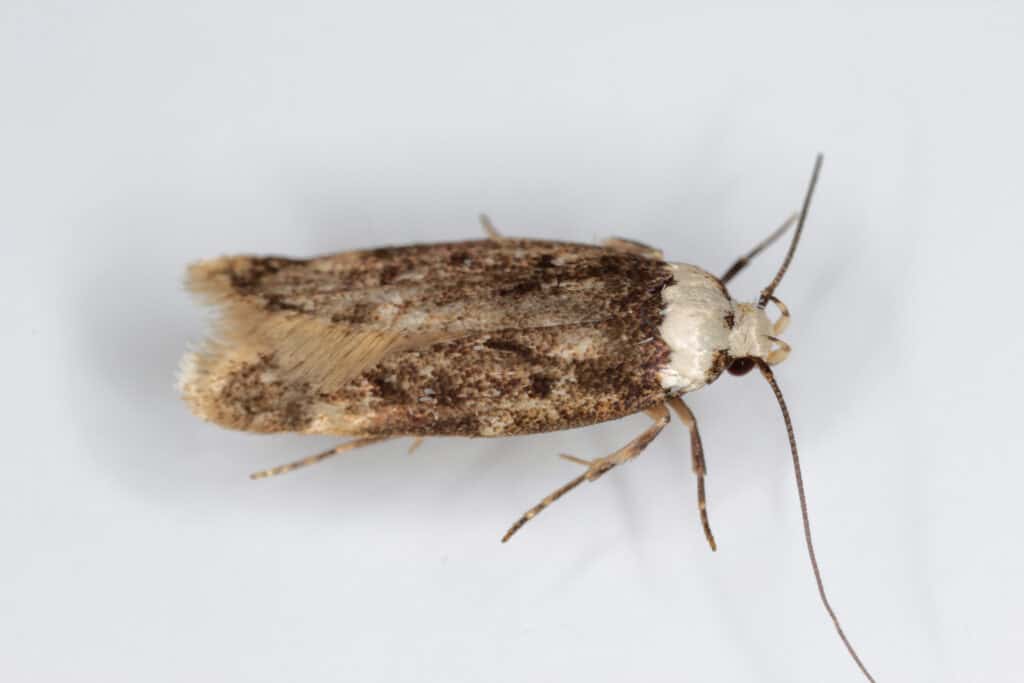
Catch clothes moth infestations early with pheromone traps to avoid costly damage.
©Tomasz Klejdysz/Shutterstock.com
16. Dehumidify
Clothes moths enjoy warm, humid atmospheres, so an effective DIY control method is dehumidifying the closet.
Moths thrive when humidity sits between 75 and 90%. Pop a dehumidifier in troublesome areas to reduce humidity and drive out moths.

Use a dehumidifier to repel moths from moist, humid locations.
©Mariia Boiko/Shutterstock.com
17. Regularly Inspect Your Natural Fiber Items
If the closet is regularly inspected, but your fabrics have holes and musty smells, then look elsewhere. Moths can just as easily inhabit thick pile rugs, vintage sofas, and the area beneath a sofa that’s not vacuumed often.

Regularly inspect clothes, rugs, carpets, and vintage furniture for moths.
©Natallia Ramanouskaya/iStock via Getty Images
18. Disposal
A heavy infestation may badly damage clothing beyond repair. In these cases, bag the item and dispose of it responsibly. Bagging-infested fabrics prevent adults from spreading around the home.
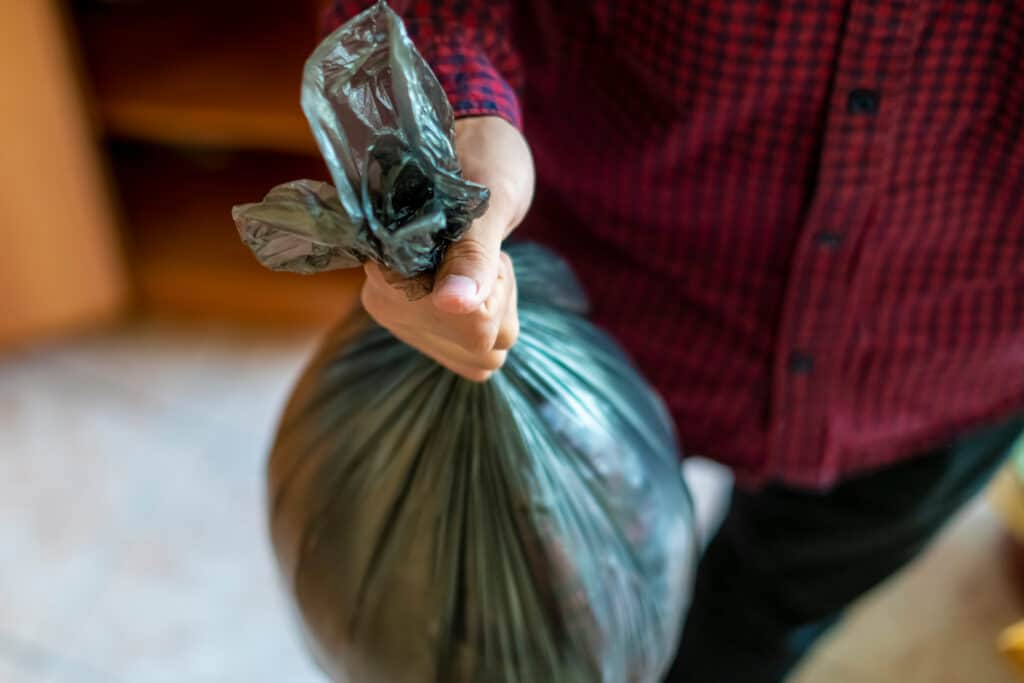
Bag heavily infested clothes or furnishings for disposal.
©Mike_shots/Shutterstock.com
The photo featured at the top of this post is © Thomas Kleidysz/Shutterstock.com
Thank you for reading! Have some feedback for us? Contact the AZ Animals editorial team.







